- Home
- Stephen King
Guns (Kindle Single)
Guns (Kindle Single) Read online
GUNS
By Stephen King
I. The Shake
Here’s how it shakes out.
First there’s the shooting. Few of the trigger-pullers are middle-aged, and practically none are old. Some are young men; many are just boys. The Jonesboro, Arkansas, school shooters were 13 and 11.
Second, the initial TV news reports, accompanied by flourishes of music and dramatic BREAKING NEWS logos at the bottom of your screen. No one really knows what the fuck is going on, but it’s exciting. You get your still photo of the location; you get your map from Google or Bing. The cable news producers are busting their asses, trying to get some local news reporter on the phone.
Third comes confirmation that it’s not a false alarm; there are casualties! American blood has been spilled! Planes with reporters and video crews onboard begin rolling down runways in New York and Atlanta, bound for whatever Podunk just got lit up by a psycho with a gun.
Fourth, the first video. It’s always from a cellphone. You know this because it’s short, and everything is all crooked and jittery. Mostly what it shows is people running.
Fifth, the first on-scene news reports, filed by those local reporters who must sub until the A-team arrives. All of them are bullshit with excitement at their unexpected turn on the national stage, although some hide it better than others. One or more will use the phrase “as many as,” followed by a number. This linguistic construction will be used dozens of times in the first hour, as the reporters slowly close in on the shooter’s final tally. It’s like watching a carnival game of chance. As many as six. No, as many as twelve. No, Witnesses who fled the shooter say it’s at least eight.
Sixth, the correct equation: X dead, Y injured.
Seventh, the first cop interview. Cop One says nothing substantive, and doesn’t have to. His job is to look stalwart and use police jargon.
Eighth, the shooter is indentified incorrectly.
Ninth, the first stand-up report from outside the local hospital, preferably with an ambulance in the background. Bonus points for an arriving ambulance with lights and siren.
Tenth, the shooter is identified correctly, and we get to look at a yearbook photo in which the guy looks pretty much like anybody. The search is already under way for a photo where he will look like your worst nightmare.
Eleventh, the first Talking Head interview. Said Head talks about gun violence. He or she may also bring up America’s famous culture of violence, but it’s probably too early. The culture-of-violence thing usually has to wait until the third or fourth Talking Head interview.
Twelfth, interviews with eyewitnesses, most of them weeping and inarticulate (the phrase “popping sounds” will be used). A reporter who makes actual money for asking questions so dumb they are surreal will inquire, “How did you feel?”
Thirteenth, wall-to-wall cable news coverage begins. By now producers will be assembling the best clips, and you will see them more often than Fred Thompson flogging reverse mortgages.
Fourteenth, recaps of previous shootings begin. We will be shown the superstars of America’s unbalanced and disaffected time and time again: Harris, Klebold, Cho, Mohammed, Malvo, Lanza. These are the guys we remember, not the victims. News producers are especially fond of Aurora movie theater shooter James Holmes’s booking photo, ’cos gosh, that motherfucker just looks so crazy. He really is your worst nightmare!
Fifteenth, interviews with people who knew the shooter. They all agree that he was pretty weird, but no one expected him to do something like this.
Sixteenth, what cable news does best now begins, and will continue for the next seventy-two hours: the slow and luxurious licking of tears from the faces of the bereaved. We’re treated to interviews with weeping mothers and fathers; interviews with stunned siblings and classmates; fleets of hearses rolling from church to cemetery; memorials featuring flowers, teddy bears, photographs, and signs saying WE WILL NEVER FORGET YOU. The best part of Number Sixteen is that the cable networks are now free to resume commercial messages. As a result, you can go directly from a funeral to info about adult diapers, or products to stiffen your penis, or how if you follow a certain green line across your kitchen floor, you’ll be able to spend your retirement living in Fat City.
Seventeenth, the NRA announces they will have no comment until the details become clear. Also out of sympathy for the victims. Pro-gun legislators neglect to return calls from news organizations.
Eighteenth, politicians decree a national dialogue about gun control. This dialogue centers on automatic and semiautomatic weapons, plus high-capacity clips and magazines for same. (The gun Adam Lanza used at Sandy Hook to murder almost two dozen little kids was a Bushmaster AR-15. He also carried a Glock .10, a pistol so big it’s issued to rangers in Greenland, should they encounter polar bears.)
Nineteenth, the NRA drops the other shoe (only it’s more like a combat boot), proclaiming itself dead-set against any changes in existing gun laws. In their official statement, they blame the shooters and America’s culture of violence. They also single out the failure of mental health professionals to ID potentially dangerous persons, even though most US senators and representatives with A ratings from the NRA don’t want to see a single dime of federal aid spent on beefing up such services. (Gosh, they’ve got that pesky deficit to think about.) The NRA doesn’t come right out and say the victims are also to blame for thinking they could live in America without a gun on their person or in their purse, but the implication is hard to miss.
Twentieth, there’s a killer tornado in Louisiana, or an outbreak of hostilities in the Mideast, or a celebrity dead of a drug overdose. Out comes the dramatic music and the BREAKING NEWS chyrons. The shooting is relegated to second place. Pretty soon it’s in third place. Then it’s a squib behind that day’s funny YouTube video.
Twenty-first, any bills to change existing gun laws, including those that make it possible for almost anyone in America to purchase a high-capacity assault weapon, quietly disappear into the legislative swamp.
Twenty-second, it happens again and the whole thing starts over.
That’s how it shakes out.
II. Rage
During my junior and senior years in high school, I wrote my first novel, then titled Getting It On. I suppose if it had been written today, and some high school English teacher had seen it, he would have rushed the manuscript to the guidance counselor and I would have found myself in therapy posthaste. But 1965 was a different world, one where you didn’t have to take off your shoes before boarding a plane and there were no metal detectors at the entrances to high schools. Also a world where America hadn’t been constantly at war for a dozen years.
Getting It On concerned a troubled boy named Charlie Decker with a domineering father, a load of adolescent angst, and a fixation on Ted Jones, the school’s most popular boy. Charlie takes a gun to school, kills his algebra teacher, and holds his class hostage. During the siege that follows, a kind of psychological inversion takes hold, and gradually the class begins to see Ted rather than Charlie as the villain. When Ted tries to escape, his supposedly well-adjusted classmates beat the shit out of him. Charlie caps his final day of public education by trying to commit what is sometimes called “blue suicide.”
Ten years later, after the first half-dozen of my books had become bestsellers, I revisited Getting It On, rewrote it, and submitted it to my paperback publisher under the pseudonym of Richard Bachman. It was published as Rage, sold a few thousand copies, and disappeared from view. Or so I thought.
Then, in April of 1988, a San Gabriel, California, high school student named Jeff Cox walked into his English class, declared that “urban terrorism is fun,” and held his fellow students hostage with a Korean-made .223 assault
rifle. He had a few modest demands: sodas, cigarettes, sandwiches, and a million dollars in cash. He fired several shots, but into the walls and ceilings rather than at the kids. “I don’t think I can kill anyone,” he said. “I don’t think I can do it.” One of the students jumped him while he was gabbing on the phone, and disarmed him. When police asked where he’d gotten the idea, he told them from an airliner hijacking story on TV. Oh, and from a paperback novel called Rage.
Seventeen months later, a shy 17-year-old named Dustin Pierce burst into a World History class at Jackson, Kentucky, High School with a .44 Magnum and a shotgun. He shot into the ceiling and told teacher Brenda Clark and about a dozen of the students to leave. He held 11 others hostage while police surrounded the building and a SWAT team was flown in by helicopter. Pierce, meanwhile, flipped through Clark’s grade book and remarked, “Look how smart I am. Why am I doing this?” One by one, Pierce let his hostages go, and by 4 p.m., it was just Dustin and his Dirty Harry revolver. “I became increasingly afraid he would kill himself,” said hostage negotiator Bob Stephens. “He seemed to be carrying out the scenario of a book he had been reading.” The book was Rage. Dustin Pierce didn’t kill himself or anyone else. He threw out his guns and emerged with his hands up. What he really wanted, it turned out, was to see his father. And for his father — maybe for the first time — to really see him.
In February of 1996, a boy named Barry Loukaitis walked into his algebra class in Moses Lake, Washington, with a .22 caliber revolver and a high-powered hunting rifle. He used the rifle to kill instructor Leona Caires and two students. Then, waving the pistol in the air, he declared, “This sure beats algebra, doesn’t it?” The quote is from Rage. A phys ed teacher, in a commendable act of heroism, charged Loukaitis and overpowered him.
In 1997, Michael Carneal, age 14, arrived at Heath High School, in Paducah, Kentucky, with a Ruger MK II semiautomatic pistol in his backpack. He approached a before-school prayer group, paused to load his gun and stuff shooter’s plugs in his ears, then opened fire. He killed three and wounded five. Then he dropped the gun on the floor and cried, “Kill me! Please! I can’t believe I did that!” A copy of Rage was found in his locker.
That was enough for me, even though at the time, the Loukaitis and Carneal shootings were the only Rage-related ones of which I was aware. I asked my publishers to pull the novel from publication, which they did, although it wasn’t easy. By then it was a part of an omnibus containing all four Bachman books. (In addition to Rage, there was The Long Walk, The Running Man, and Roadwork — another novel about a shooter with psychological problems.) The Bachman collection is still available, but you won’t find Rage in it.
According to The Copycat Effect, written by Loren Coleman (Simon and Schuster, 2004), I also apologized for writing Rage. No, sir, no ma’am, I never did and never would. It took more than one slim novel to cause Cox, Pierce, Loukaitis, and Carneal to do what they did. These were unhappy boys with deep psychological problems, boys who were bullied at school and bruised at home by parental neglect or outright abuse. They seem to have been operating in a dream, two of them verbally asking themselves afterward why they did what they did. As for what was going on with them before they acted:
• Cox spent several weeks in an LA County psych ward, where he spoke of putting a gun in his mouth and pulling the trigger.
• Pierce was collateral damage in an ugly divorce; his father left and his mother often talked to the boy about killing herself.
• Carneal was bullied. In addition, he suffered from paranoia so great he would cover the vents and windows in the school bathrooms, because he believed people were watching him pee. When sitting in chairs, he lifted his feet so no one hiding beneath could grab him.
• Loukaitis wrote poems about how worthless his father was, and how he wished the man were dead.
All four had easy access to guns. Most of the weapons they used were in the home. Cox bought his at Wolfe’s Gun Shop in his hometown of San Gabriel, for $400 — easy-peasy. The clerk had no reason not to sell it to him; the boy said the semiauto was a present for his father and was old enough under California law to buy a firearm.
Ryan Lanza’s mother bought her guns, as so many people do, for home defense. When young Lanza wanted them, he killed her.
My book did not break Cox, Pierce, Carneal, or Loukaitis, or turn them into killers; they found something in my book that spoke to them because they were already broken. Yet I did see Rage as a possible accelerant, which is why I pulled it from sale. You don’t leave a can of gasoline where a boy with firebug tendencies can lay hands on it.
Nevertheless, I pulled it with real regret. Not because it was great literature — with the possible exception of Arthur Rimbaud, teenagers rarely pen great literature — but because it contained a nasty glowing center of truth that was more accessible to me as an adolescent. Adults do not forget the horrors and shamings of their childhood, but those feelings tend to lose their immediacy (except perhaps in dreams, where even old men and women find themselves taking tests they have not studied for with no clothes on). The violent actions and emotions portrayed in Rage were drawn directly from the high school life I was living five days a week, nine months of the year. The book told unpleasant truths, and anyone who doesn’t feel a qualm of regret at throwing a blanket over the truth is an asshole with no conscience.
As far as I’m concerned, high school sucked when I went, and probably sucks now. I tend to regard people who remember it as the best four years of their lives with caution and a degree of pity. For most kids, it’s a time of doubt, stress, painful self-consciousness, and unhappiness. They’re actually the lucky ones. For the bullied underclass — the wimps, the shrimps, and the girls who are routinely referred to as scags, bags, or hos — it’s four years of misery and two kinds of hate: the kind you feel for yourself and the kind you feel for the jackwads who bump you in the halls, pull down your shorts in gym class, and pick out some charming nickname like Queerboy or Frogface that sticks to you like glue. In Iroquois rituals of manhood, naked warriors were sent running down a gantlet of braves swinging clubs and jabbing with the butt ends of spears. In high school, the goal is Graduation Day instead of a manhood feather, but I imagine the feelings are about the same.
I had friends in high school — including a girlfriend who stood up for me when I needed standing-up for, God bless her — and I possessed a certain sophomoric wit that gained me respect (also a few detentions, which were a very acceptable trade-off). Those things got me through. Even so, I couldn’t wait to put high school behind me and meet people who did not consider giving wedgies to losers a valid part of social interaction.
If that was how it was for me, a more or less regular dude, how must it be for kids like Jeff Cox, Dustin Pierce, Barry Loukaitis, or Michael Carneal? Is it really so surprising that they would find a soul brother in the fictional Charlie Decker? But that doesn’t mean we excuse them, or give them blueprints to express their hate and fear. Charlie had to go.
He was dangerous. And in more ways than one.
III. Drunks in a Barroom
If I could wave a magic wand and have one wish granted, I’d wish for an end to world hunger; the small shit could wait in line. If, however, the god or genie who bestowed the magic wand told me my one wish had to do with American politics, I think I’d wave it and make the following proclamation: “Every liberal in the country must watch Fox News for one year, and every conservative in the country must watch MSNBC for one year.” (Middle-of-the-roaders could stick with CSI.)
Can you imagine what that would be like? For the first month, the screams of “What IS this shit???” would echo high to the heavens. For the next three, there would be a period of grumbling readjustment as both sides of the political spectrum realized that, loathsome politics aside, they were still getting the weather, the sports scores, the hard news, and the Geico Gecko. During the next four months, viewers might begin seeing different anchors and commentators, as each news netw
ork’s fringe bellowers attracted increasing flak from their new captive audiences. Adamantly shrill editorial stances would begin to modify as a result of tweets and emails saying, “Oh, wait a minute, Slick, that’s fucking ridiculous.” Finally, the viewers themselves might change. Not a lot; just a slide-step or two away from the kumbayah socialists of the left and the Tea Partiers of the right. I’m not saying they’d re-colonize the all-but-deserted middle (lot of cheap real estate there, my brothers and sisters), but they might close in on it a trifle.
Isn’t that a lovely dream? Not up there with the dream of my soul uncle, Martin Luther King, but still lovely. Think of the quiet that might ensue if all that shrill rhetoric were turned down a few notches! Think of the dinner table arguments that might not happen! There might even be (o lost and shining city) a resumption of actual dialogue.
There’s sure none now. American politics has managed to catch itself in one of those fiendish Chinese finger pullers we used to buy in the dime store when we were kids, and as a result, two muscular and capable hands can do no work. The wrangle over American fiscal policy is one example; the wrangle over immigration is another; the argument over gun control is a third. Political discourse as it once existed in America has given way to useless screaming. On second thought, forget the finger pullers. We’re like drunks in a barroom. No one’s listening because everyone is too busy thinking about what they’re going to say next, and absolutely prove that the current speaker is so full of shit he squeaks.
That makes my task in writing this essay dispiriting. Given my liberal creds, those of a blue persuasion are already forming a choir, ready to say amen and right on, brother, as I preach the Gospel of Gun Control. And those of a red persuasion have already moved on (possibly to the comforting scripture of the Rev. Rush Limbaugh), or come to this essay with their shoulders hunched and their fists clenched, itching to begin long-winded blogs that will explain how naïve I am, how wrong my facts are, and how I should stick to writing books.

 The Stand
The Stand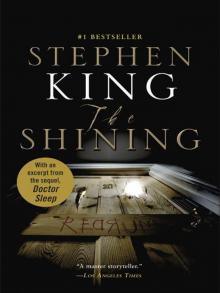 The Shining
The Shining It
It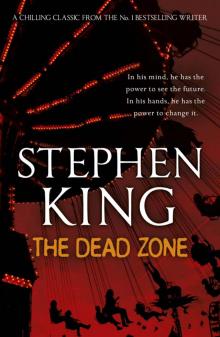 The Dead Zone
The Dead Zone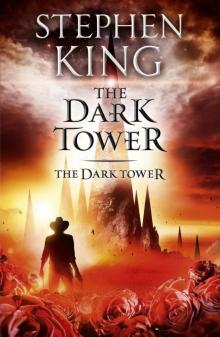 The Dark Tower
The Dark Tower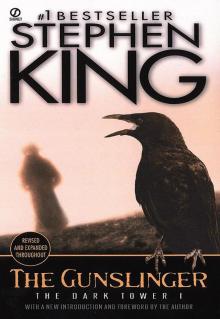 The Gunslinger
The Gunslinger Song of Susannah
Song of Susannah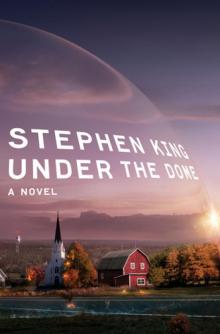 Under the Dome
Under the Dome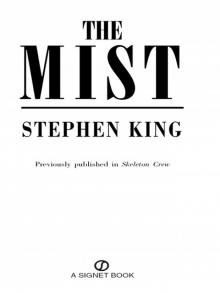 The Mist
The Mist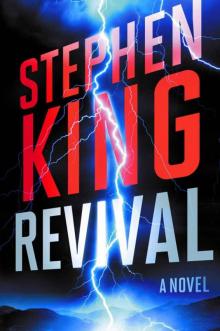 Revival
Revival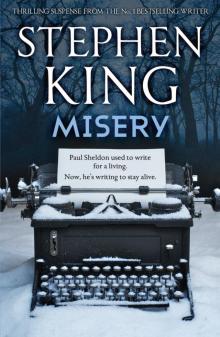 Misery
Misery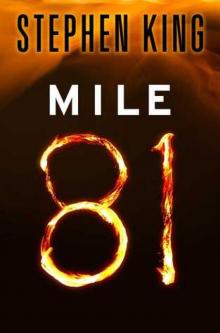 Mile 81
Mile 81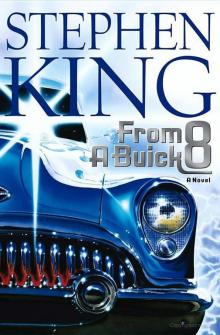 From a Buick 8
From a Buick 8 Just After Sunset
Just After Sunset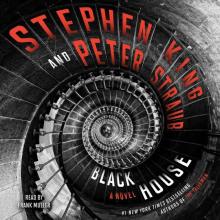 Black House
Black House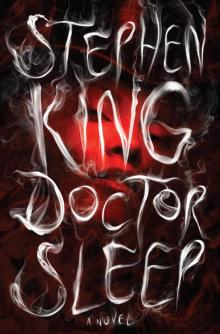 Doctor Sleep
Doctor Sleep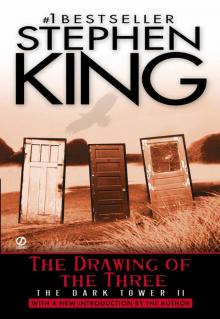 The Drawing of the Three
The Drawing of the Three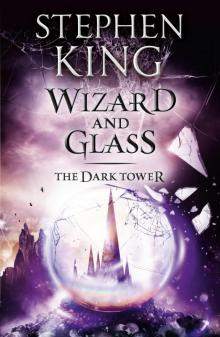 Wizard and Glass
Wizard and Glass Dolores Claiborne
Dolores Claiborne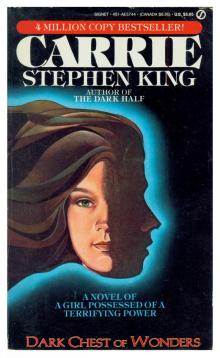 Carrie
Carrie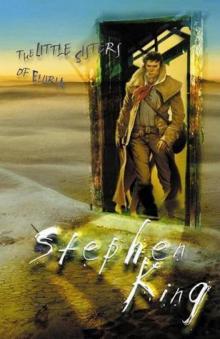 The Little Sisters of Eluria
The Little Sisters of Eluria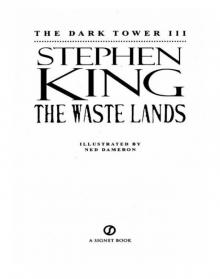 The Waste Lands
The Waste Lands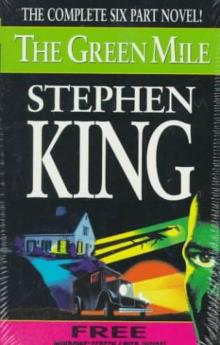 The Green Mile
The Green Mile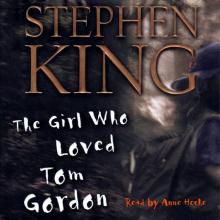 The Girl Who Loved Tom Gordon
The Girl Who Loved Tom Gordon Cujo
Cujo The Outsider_A Novel
The Outsider_A Novel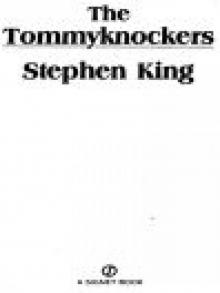 The Tommyknockers
The Tommyknockers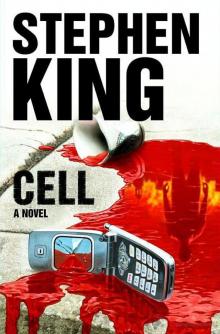 Cell
Cell Pet Sematary
Pet Sematary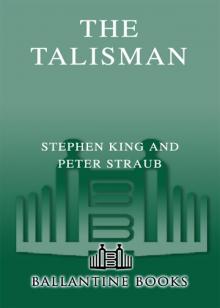 The Talisman
The Talisman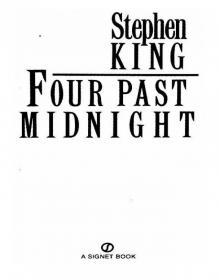 Four Past Midnight
Four Past Midnight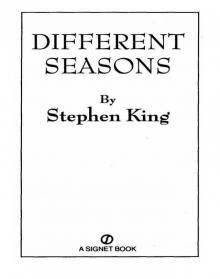 Different Seasons
Different Seasons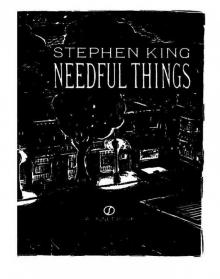 Needful Things
Needful Things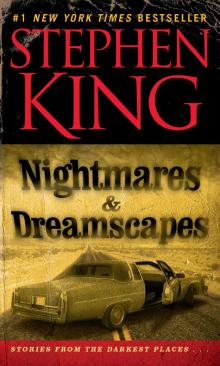 Nightmares and Dreamscapes
Nightmares and Dreamscapes Christine
Christine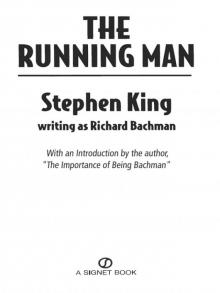 The Running Man
The Running Man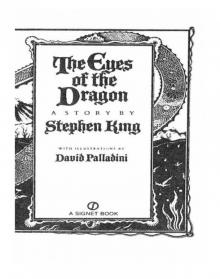 The Eyes of the Dragon
The Eyes of the Dragon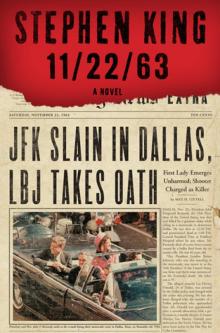 11/22/63
11/22/63 Firestarter
Firestarter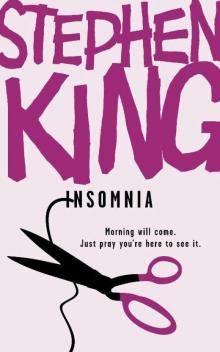 Insomnia
Insomnia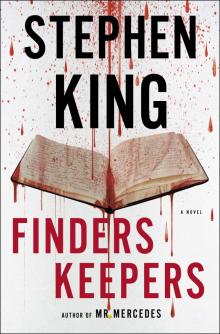 Finders Keepers
Finders Keepers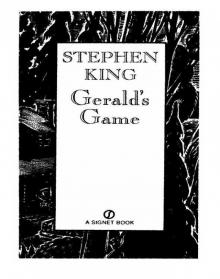 Gerald's Game
Gerald's Game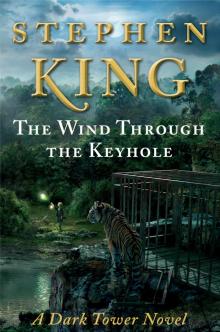 The Wind Through the Keyhole
The Wind Through the Keyhole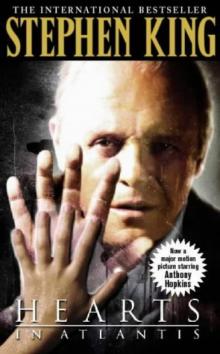 Hearts in Atlantis
Hearts in Atlantis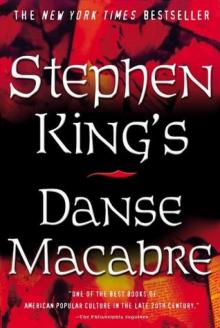 Danse Macabre
Danse Macabre Thinner
Thinner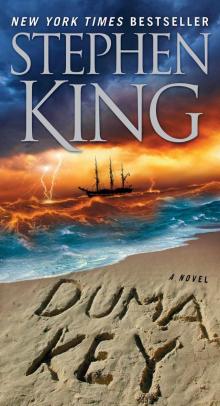 Duma Key
Duma Key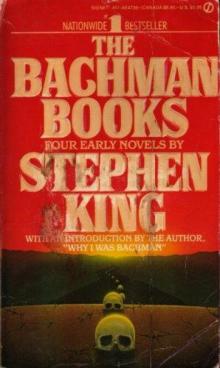 The Bachman Books
The Bachman Books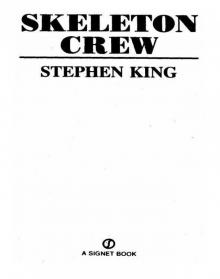 Skeleton Crew
Skeleton Crew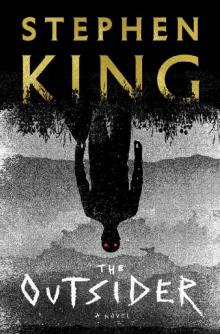 The Outsider-Stephen King
The Outsider-Stephen King Full Dark, No Stars
Full Dark, No Stars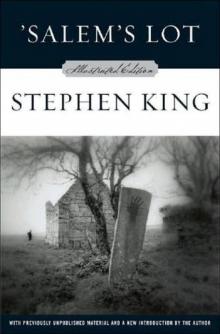 Salem's Lot
Salem's Lot Bag of Bones
Bag of Bones Desperation
Desperation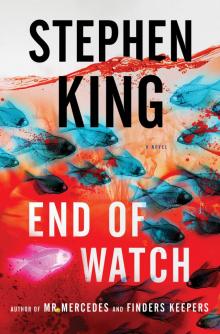 End of Watch
End of Watch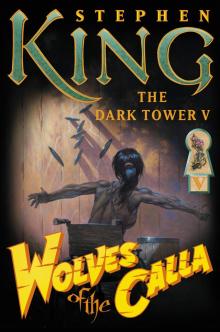 Wolves of the Calla
Wolves of the Calla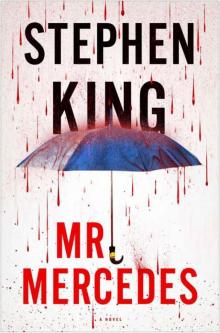 Mr. Mercedes
Mr. Mercedes Billy Summers
Billy Summers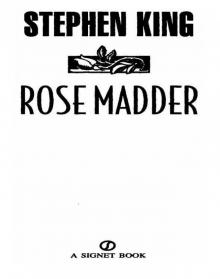 Rose Madder
Rose Madder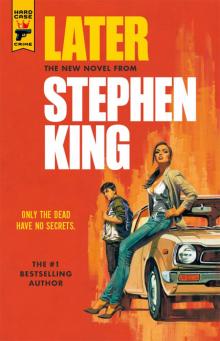 Later
Later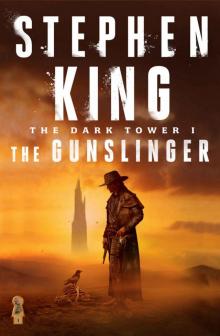 Gunslinger
Gunslinger The Langoliers
The Langoliers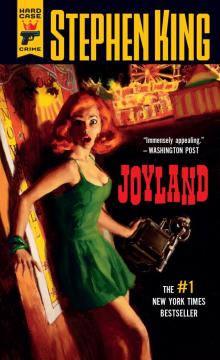 Joyland
Joyland If It Bleeds
If It Bleeds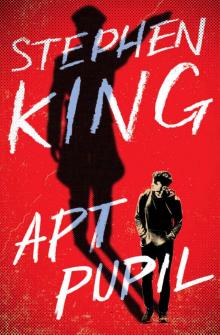 Apt Pupil (Scribner Edition)
Apt Pupil (Scribner Edition) Flight or Fright
Flight or Fright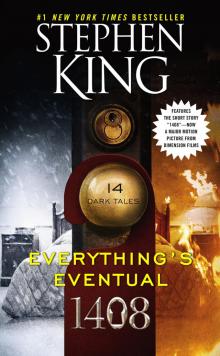 Everything's Eventual: 14 Dark Tales
Everything's Eventual: 14 Dark Tales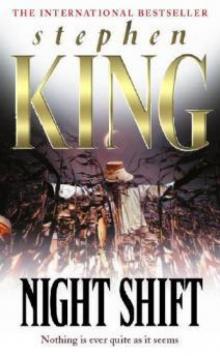 Night Shift
Night Shift The Dark Half
The Dark Half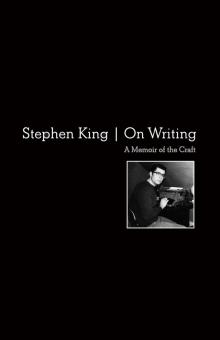 On Writing
On Writing The Institute
The Institute A Death
A Death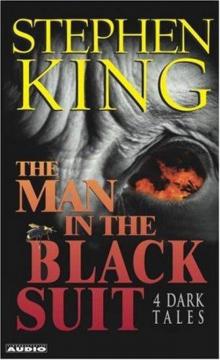 The Man in the Black Suit : 4 Dark Tales
The Man in the Black Suit : 4 Dark Tales Bullet
Bullet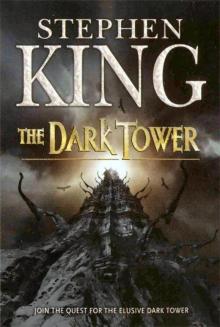 The Dark Tower tdt-7
The Dark Tower tdt-7 Chiral Mad 3
Chiral Mad 3 Big Driver
Big Driver Stephen King: The Green Mile
Stephen King: The Green Mile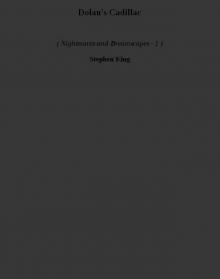 Dolan's Cadillac nad-1
Dolan's Cadillac nad-1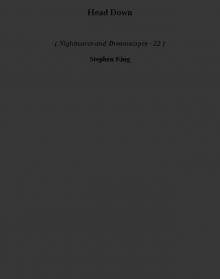 Head Down nad-22
Head Down nad-22 The Doctor's Case
The Doctor's Case Luckey Quarter
Luckey Quarter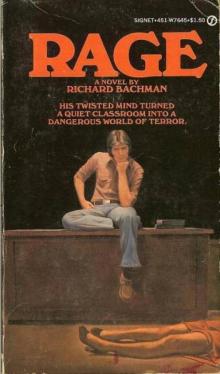 Rage (richard bachman)
Rage (richard bachman)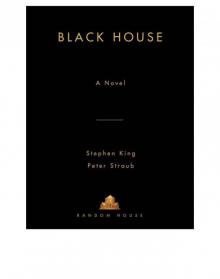 Black House js-2
Black House js-2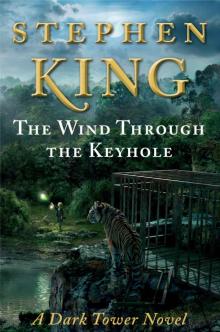 The Wind Through the Keyhole (Dark Tower)
The Wind Through the Keyhole (Dark Tower)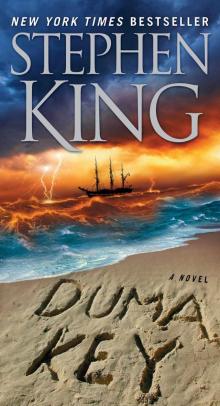 Duma Key: A Novel
Duma Key: A Novel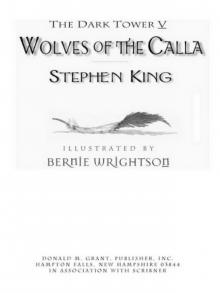 Dark Tower V, The
Dark Tower V, The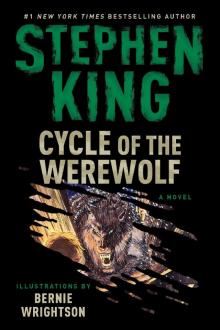 Cycle of the Werewolf
Cycle of the Werewolf AUTOPSY ROOM FOUR
AUTOPSY ROOM FOUR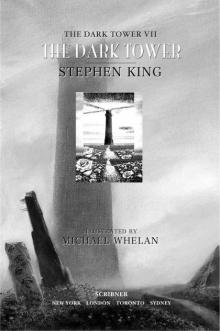 Dark Tower VII, The (v. 7)
Dark Tower VII, The (v. 7) Gramma
Gramma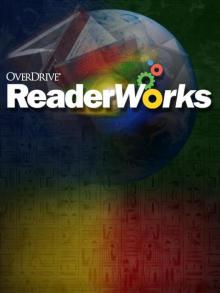 Suffer the Little Children
Suffer the Little Children Chinga
Chinga Word Processor of the Gods
Word Processor of the Gods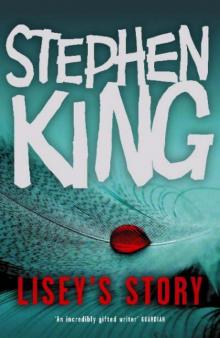 Lisey’sStory
Lisey’sStory Dark Tower V (Prologue)
Dark Tower V (Prologue)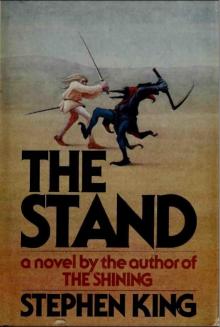 The Stand (Original Edition)
The Stand (Original Edition)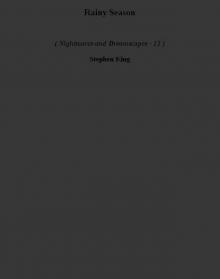 Rainy Season nad-13
Rainy Season nad-13 Transgressions
Transgressions The Plant
The Plant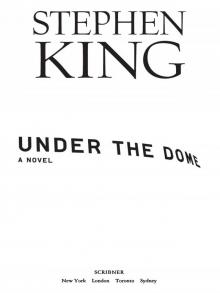 Under the Dome: A Novel
Under the Dome: A Novel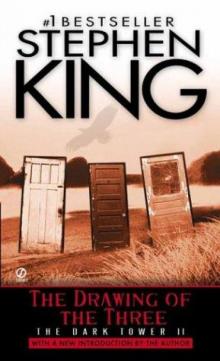 The Dark Tower II: The Drawing of the Three
The Dark Tower II: The Drawing of the Three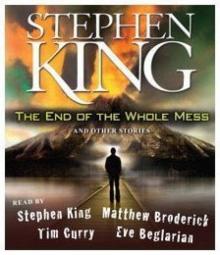 The End of the Whole Mess:
The End of the Whole Mess: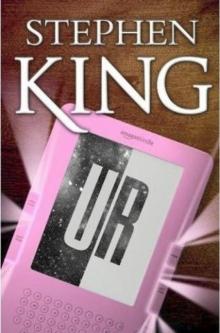 Ur
Ur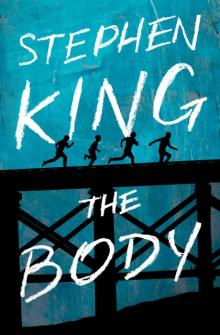 The Body
The Body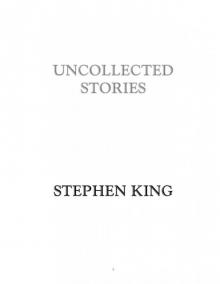 Uncollected Stories 2003
Uncollected Stories 2003 Chattery Teeth
Chattery Teeth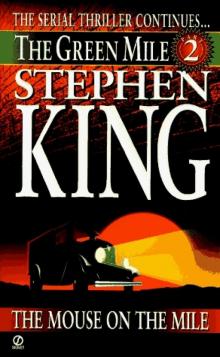 The Mouse on the Mile
The Mouse on the Mile The Cat from Hell
The Cat from Hell![The Drawing of the Three [The Dark Tower II] Read online](http://i1.bookreadfree.com/i/03/25/the_drawing_of_the_three_the_dark_tower_ii_preview.jpg) The Drawing of the Three [The Dark Tower II]
The Drawing of the Three [The Dark Tower II] Cell: A Novel
Cell: A Novel Uncle Otto's Truck
Uncle Otto's Truck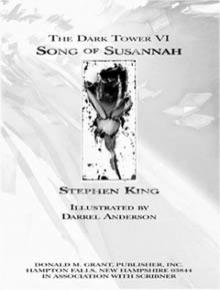 Song of Susannah dt-6
Song of Susannah dt-6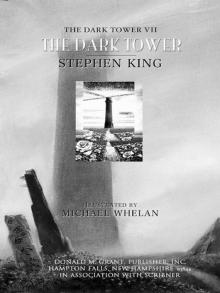 The Dark Tower VII
The Dark Tower VII Head Down
Head Down Sneakers
Sneakers Crouch End
Crouch End Outsider
Outsider End of Watch: A Novel (The Bill Hodges Trilogy Book 3)
End of Watch: A Novel (The Bill Hodges Trilogy Book 3) Revival: A Novel
Revival: A Novel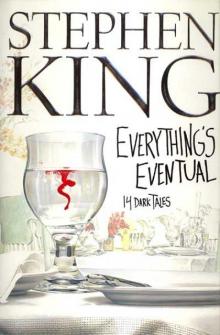 Everything's Eventual skssc-4
Everything's Eventual skssc-4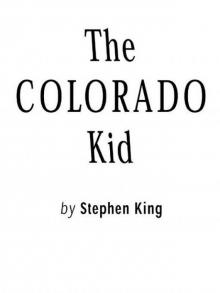 The Colorado Kid
The Colorado Kid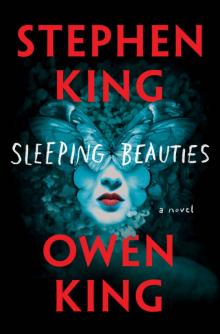 Sleeping Beauties: A Novel
Sleeping Beauties: A Novel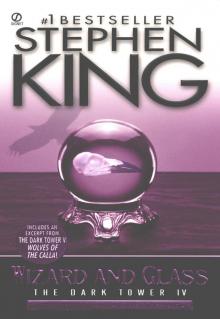 The Dark Tower IV Wizard and Glass
The Dark Tower IV Wizard and Glass A Book of Horrors
A Book of Horrors Four Past Midnight - 3 - Secret Window, Secret Garden
Four Past Midnight - 3 - Secret Window, Secret Garden The House on Maple Street
The House on Maple Street Sometimes They Come Back
Sometimes They Come Back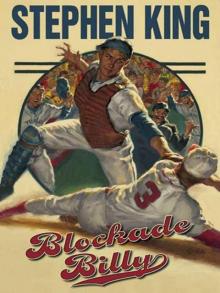 Blockade Billy
Blockade Billy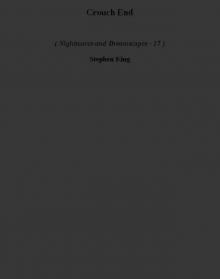 Crouch End nad-17
Crouch End nad-17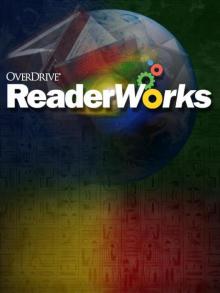 Lunch at the Gotham Cafe
Lunch at the Gotham Cafe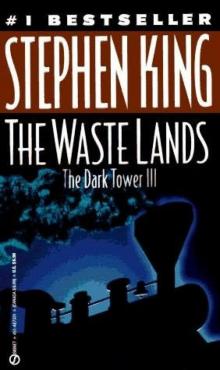 The Waste Lands dt-3
The Waste Lands dt-3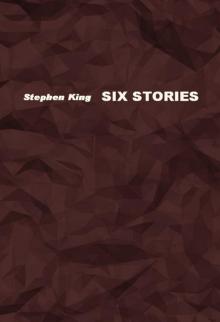 Six Stories
Six Stories A Face in the Crowd
A Face in the Crowd Case
Case Four Past Midnight - 2 - The Langoliers
Four Past Midnight - 2 - The Langoliers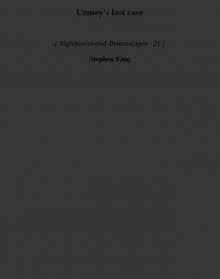 Umney's last case nad-21
Umney's last case nad-21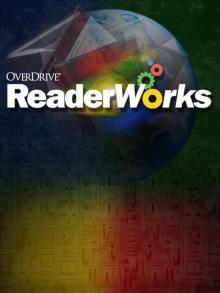 Survivor Type
Survivor Type Guns (Kindle Single)
Guns (Kindle Single) You Know They Got a Hell of a Band
You Know They Got a Hell of a Band The Jaunt
The Jaunt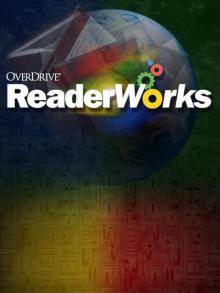 In A Half World Of Terror
In A Half World Of Terror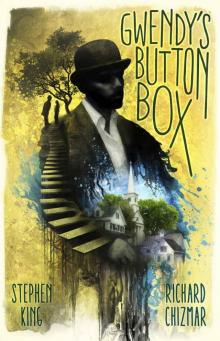 Gwendy's Button Box
Gwendy's Button Box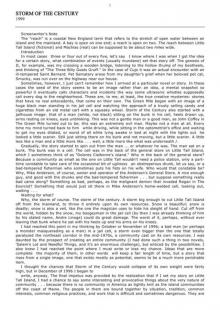 Storm of the Century
Storm of the Century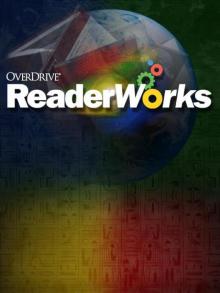 The Jaunt. Travel
The Jaunt. Travel Roadwork
Roadwork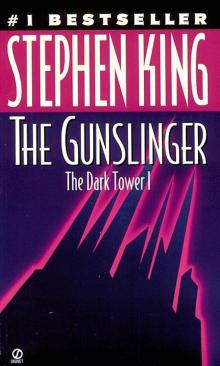 Darktower 1 - The Gunslinger
Darktower 1 - The Gunslinger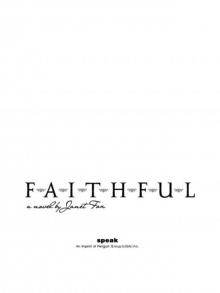 Faithful
Faithful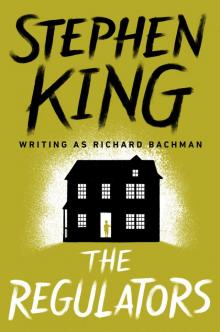 The Regulators
The Regulators A Bedroom in the Wee Hours of the Morning
A Bedroom in the Wee Hours of the Morning Graveyard Shift
Graveyard Shift The Monkey
The Monkey Children of the Corn
Children of the Corn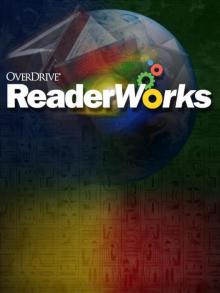 The Reploids
The Reploids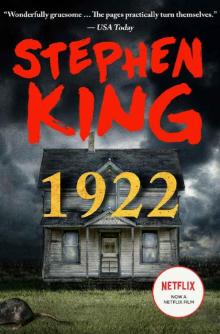 1922
1922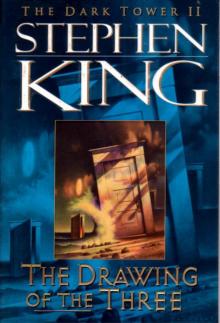 Darktower 2 - The Drawing of the Three
Darktower 2 - The Drawing of the Three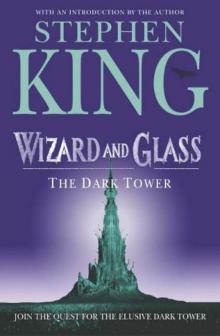 Wizard and Glass dt-4
Wizard and Glass dt-4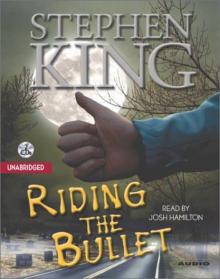 Riding The Bullet
Riding The Bullet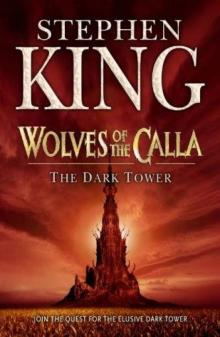 Wolves of the Calla dt-5
Wolves of the Calla dt-5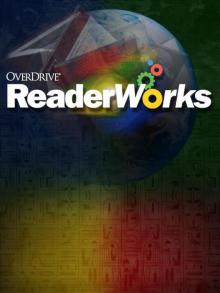 L.T.'S Theory Of Pets
L.T.'S Theory Of Pets The Langoliers fpm-1
The Langoliers fpm-1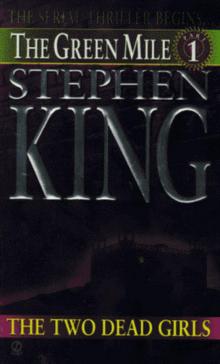 The Two Dead Girls
The Two Dead Girls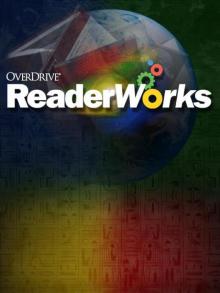 The Blue Air Compressor
The Blue Air Compressor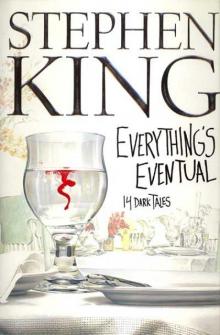 Everything's Eventual
Everything's Eventual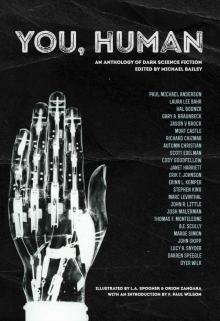 You, Human: An Anthology of Dark Science Fiction
You, Human: An Anthology of Dark Science Fiction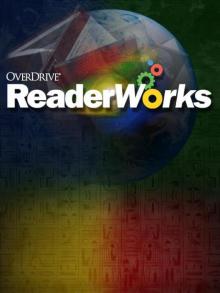 The Night of The Tiger
The Night of The Tiger The Regulators (richard bachman)
The Regulators (richard bachman)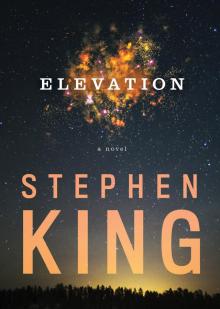 Elevation
Elevation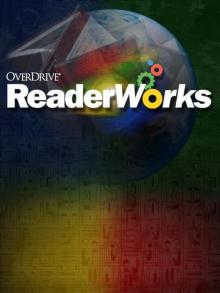 The Road Virus Heads North
The Road Virus Heads North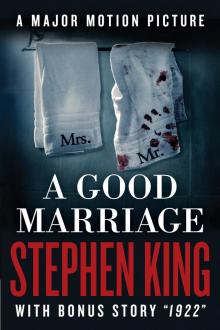 Good Marriage
Good Marriage Four Past Midnight - 5 - The Library Policeman
Four Past Midnight - 5 - The Library Policeman Grey Matter
Grey Matter Herman Wouk Is Still Alive
Herman Wouk Is Still Alive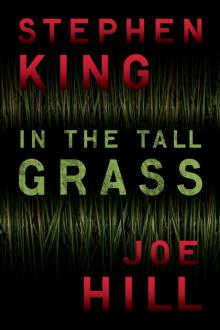 In the Tall Grass
In the Tall Grass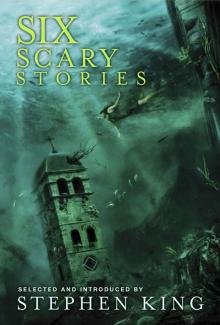 Six Scary Stories
Six Scary Stories Foreward
Foreward The Crate
The Crate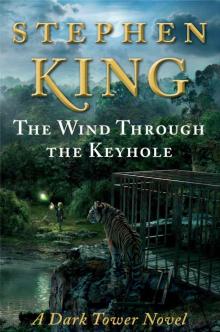 The wind through the keyhole adt-8
The wind through the keyhole adt-8 King, Stephen - Battleground
King, Stephen - Battleground The Wedding Gig
The Wedding Gig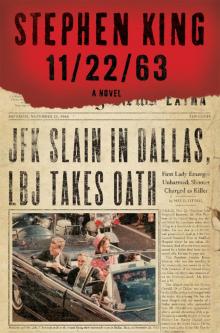 11/22/63: A Novel
11/22/63: A Novel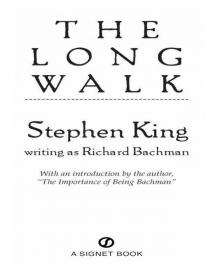 The Long Walk
The Long Walk